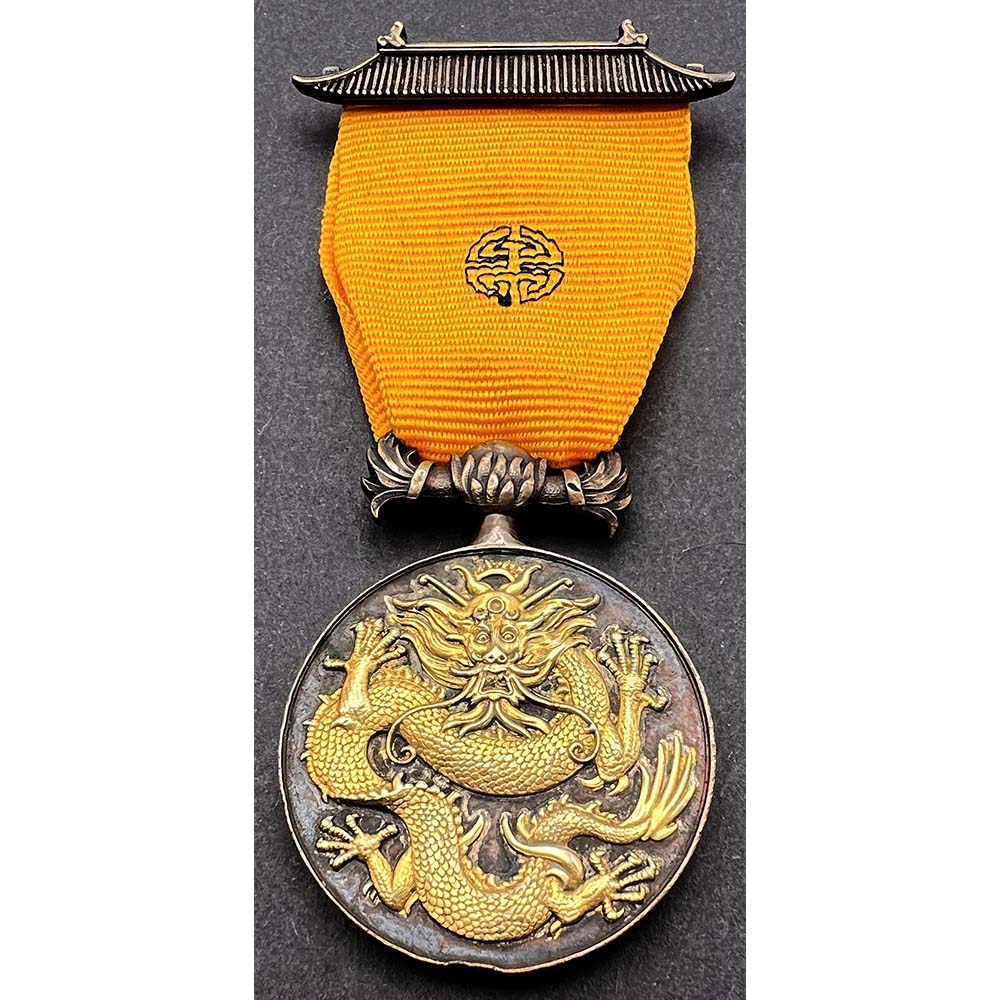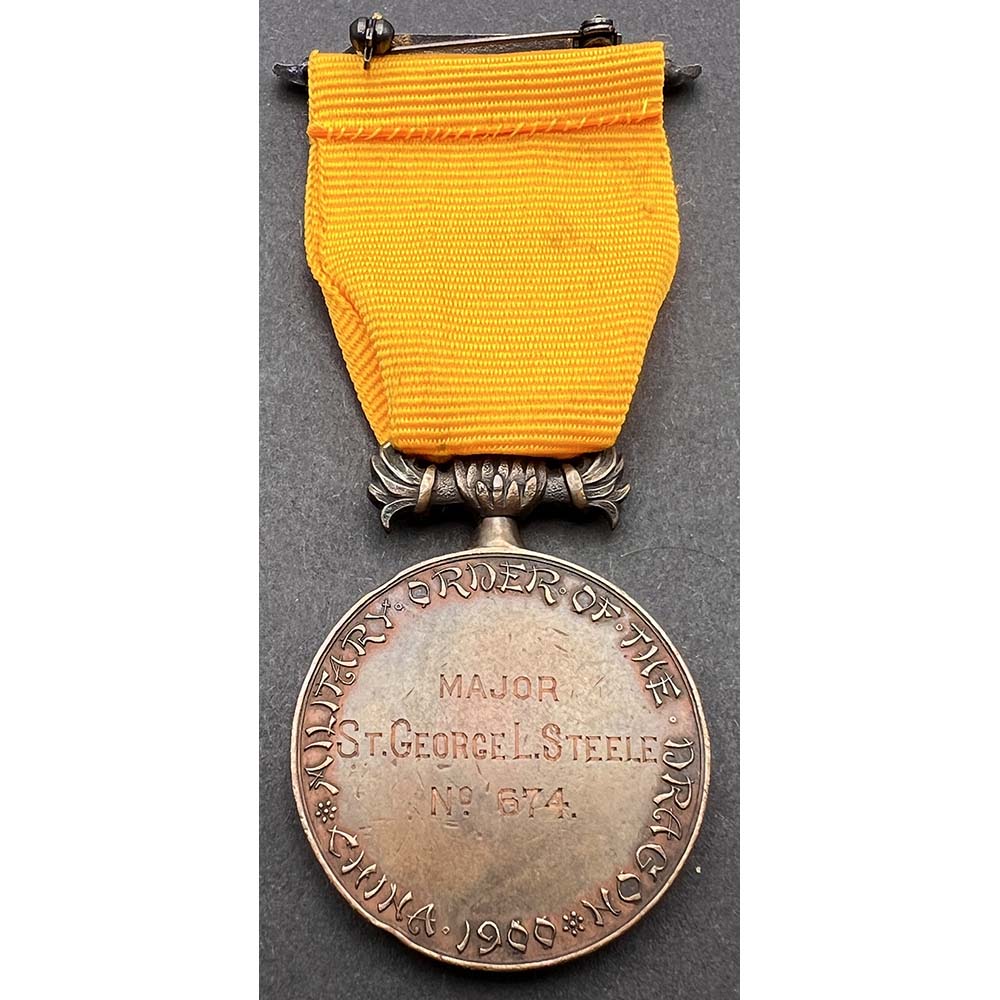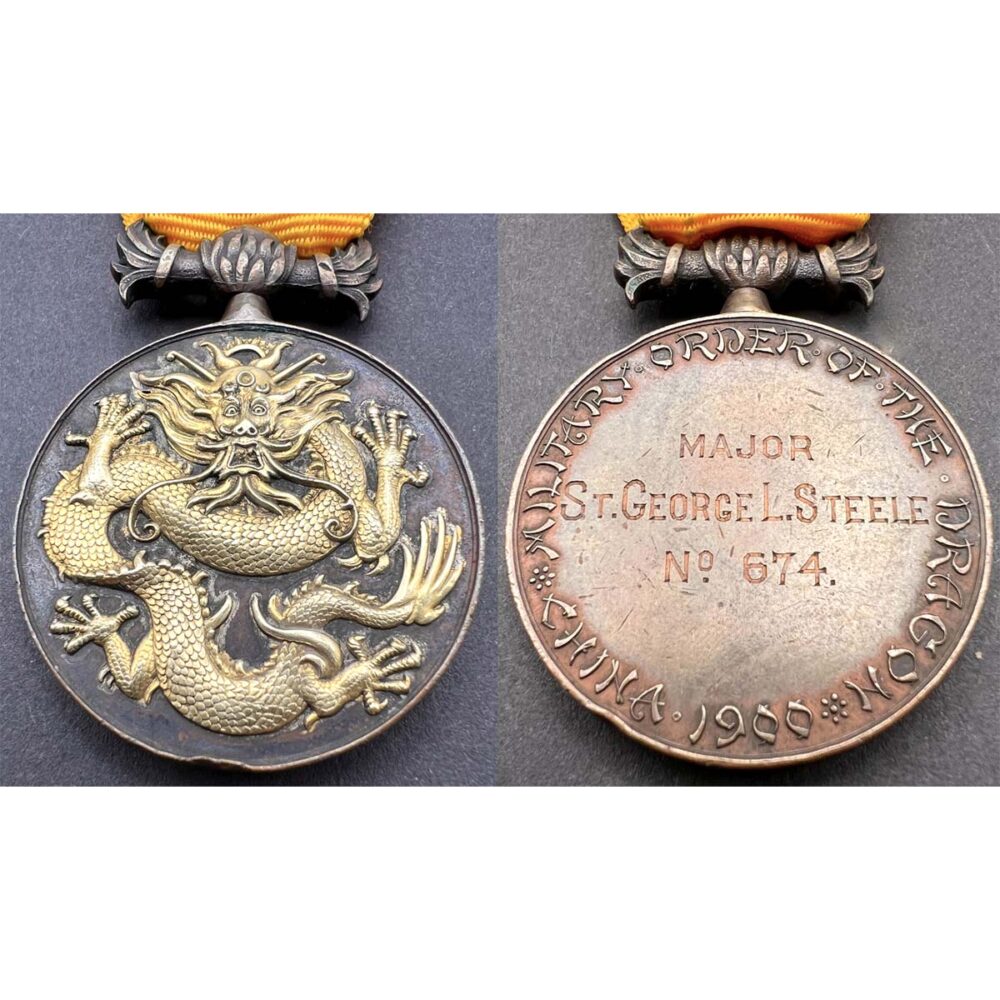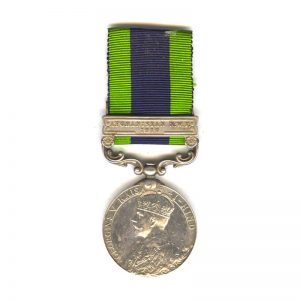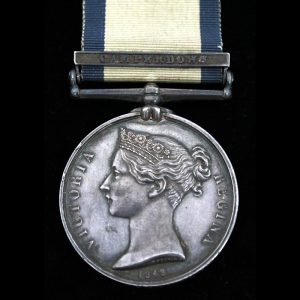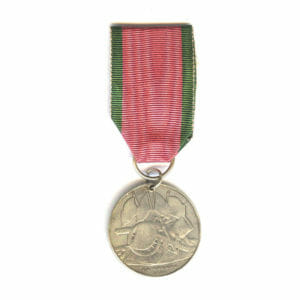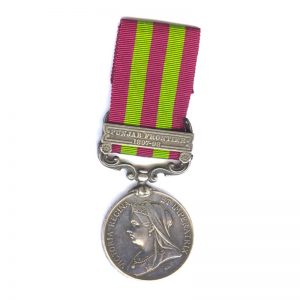Description
Military Order of the Dragon, Colonel St George Loftus Steele C.B., Served Vladivostok 1918, MID Manipur 1891, MID Tirah 1897, MID China 1900.
The Medal of the Military Order of the Dragon, produced by Bailey Banks and Biddle in Philadelphia, USA, awarded only to those Officers who saw service in the China Relief Expedition, becoming members of the “Military Order of the Dragon”.
A seldom seen medal, the Order was founded in the Forbidden City by American Army Officers who had taken part in the fighting in China, the Membership was open to both US and Allied Officers and diplomats who had served in Peking and Tientsin during that period.
Engraved on the reverse: “MAJOR ST. George. L. Steele. No 674.”
Replacement ribbon and Pagoda top bar. Original issue medal, engraving and swivelling ornate suspension.
During the China War of 1900, He was a Major in the 2nd Bengal Lancers, seeing service as Commandant of the 2nd Coolie Corps and afterwards on the Road and Railway Staff and Special Service Officer.
The remainder of his medals are all still together, the other 11 medals, and were sold by DNW/Noonans on 15th September 2021 for £5500 Hammer, about £7000 including premiums.
A brief resume from his obituary in the Gloucestershire Echo, 14th July 1936:
“COLONEL LOFTUS STEELE
DISTINGUISHED SOLDIER DIES AT CHARLTON KINGS
Colonel St George Loftus Steele, C.B. of 6 Charlton Park Gate, Charlton Kings, who died yesterday at the age of 77, had a distinguished record of service in India.
He was a son of the late Major General Arthur Loftus Steele, and after being educated at Marlborough, he entered the army in 1878 as a Subaltern in the 64th Foot, and got his second star as a lieutenant of the North Staffordshire Regiment in 1879.
In the following year he exchanged to the Bengal Staff Corps, in which he reached the substantive rank of Colonel in 1907.
He saw much active service. He was in the Egyptian Campaign of 1882 (Medal with clasp and Bronze Star)
The Manipur Expedition of 1891 (Mentioned in Despatches, medal with clasp)
The Waziristan Expeidtion of 1894-6 (clasp),
The Dongola Expedition in 1896 (Medal and Egyptian Medal),
The Tirah Campaign of 1897-98 (Mentioned in Despatches, Medal with 2 Clasps),
The China Expedition of 1900 (mentioned in despatches, medal),
For 4 years from 1896 to 1900 he was on Special Duty in Canada and the United States and
He was at Vladivostok in 1918 as D.A.Q.M.G.
During 1919 he represented the British Red Cross Society as Deputy Commissioner for the Prisoners of War Camps in Holland.
He married Alice Helen Harrington, Daughter of A.H. Harrington, I.C.S., by Whom he had four daughters.”
C.B. awarded in the London Gazette, 19th June 1911: “On the Occasion of His Majesty’s Coronation.”
Colonel St George Loftus Steele, was born on 31st March 1859, The son of Major General Arthur Loftus Steele (1815-1893) and Martha Litchfield (1820-1864).
His father was serving as a Captain at the time in the 6th Regiment Native Infantry, so he was baptised on 19th October 1859 in Rangoon, Burma (Myanmar).
He received his education at Marlborough College, and on to Sandhurst, the Royal Military College.
First commissioned into the Wexford Militia on 11th October 1876, he then joined the North Staffordshire Regiment for active service during 1879, by 1880, he transferred over to the Indian Army, joining the 2nd Bengal Cavalry.
1st Campaign, Egypt 1882
During the 1881 Expedition, he earned his first medal of 12.
Serving as an Officer with the 2nd Bengal Cavalry, he fought in the actions of Kassassin and at Tel-El-Kebir.
2nd Campaign, Manipur Expedition of 1891
Having becoming a Captain in the Indian Staff Corps during 1889, he had served on the North-East Frontier of India in the Manipur Expedition.
Notably during this campaign, the only Victoria Cross of the war was won by a fellow I.S.C. Officer, Lt C.J.W. Grant V.C.
For his services, he was awarded a Mention in Despatches (see London Gazette of 14th August 1891) and in Brigadier Major’s Despatches.
3rd Campaign, Waziristan 1894-1895
During this campaign, he was serving as the Assistant Superintendent of Army Signalling, 1st Brigade.
4th Campaign, the Expedition to Dongola 1896, Sudan War of 1896-1898.
During this campaign, he had been promoted to Major that year, and served as Brigade Transport Officer at Suakin.
5th Campaign, the Tirah Expedition of 1897-98.
During this campaign, he served as Section Commandant, Line of Communication from 5th October to 3rd December 1897.
For his services he was Mentioned in Despatches (see London Gazette 5th April 1898).
6th Campaign, 3rd China War of 1900
During this campaign, he had served in a few capacities.
Served with the Transport Department.
Served also as a Special Service Officer in Manchuria.
Also served as the Commandant and Commanding Officer of the First Corps of the Indian Coolie Corps.
Mentioned in Despatches: “These Officers have rendered good service in duties connected with the communications: Major St. G. L. Steele, 4th Bengal Lancers.”
One of 3 Officers mentioned for this service, Page 6048, London Gazette 13th September 1901.
PROMOTED TO COLONEL, DELHI DURBAR 1911 AND ORDER OF THE BATH
Promoted to the rank of Colonel on 1st June 1907, and saw service in between campaigns as the Assistant Quartermaster General to the 1st Peshawar Division, during which he was present for the King’s Delhi Durbar Coronation celebrations in 1911, earning the medal.
For those services he was also made a Companion of the Military Division of the Order of the Bath, London Gazette, 19th June 1911.
WORLD WAR 1 AND RUSSIA 1918
During 1914, he was now serving as an Assistant Adjutant and Quartermaster General on the Staff of the Indian Army.
He was sent on “Special Duty” to Canada and the United States of America during 1917-18.
Being fluent in the Russian Language, he was then posted to Vladivostok during the Russian Civil War of 1918 as a Deputy Assistant Quartermaster General.
Following the end of WW1 and the war in Russia, he took up another post as Commissioner for Holland, with the British Red Cross Society, regarding Russian Prisoner of War Camps.
That year in 1919, he finally retired from the Army having served over 40 years, of which many years had been spent in the field in various campaigns, of which he was mentioned in despatches numerous times.
